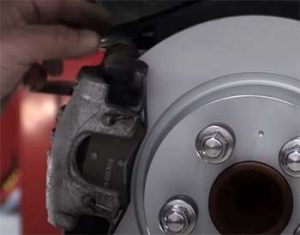In the world of battery testing and maintenance, there are two primary types of testers that reign supreme: carbon pile load testers and digital load testers. As with any tool or piece of equipment, each type comes with its own set of benefits and drawbacks.
In this comprehensive review, we’ll dive into the world of carbon pile and digital load testers, comparing their features and functionality, as well as discussing their accuracy, ease of use, and cost-effectiveness.
A Brief Comparison Table
| Feature | Carbon Pile Load Tester | Digital Load Tester |
| Testing Method | Load Testing | Conductance Testing |
| Accuracy | High | Generally Accurate |
| Versatility | High (wide range of battery types/sizes) | Moderate (may not work with certain types/sizes) |
| Durability | High | Moderate |
| Size & Weight | Bulky & Heavy | Smaller & Lighter |
| Ease of Use | More Complex | User-Friendly |
| Maintenance Requirements | Higher (cleaning & replacing carbon discs) | Lower (fewer parts to wear out/replace) |
| Cost | Generally Lower | Generally Higher |
| Advanced Features | Limited | More (data storage, transfer capabilities) |
Analyzing The Differences Between Carbon Pile And Digital Load Testers
Now that we’ve outlined the basic features, pros, and cons of both carbon pile and digital load testers, let’s dive deeper into the differences between the two.
- Load Testing Vs. Conductance Testing

One key distinction between carbon pile and digital load testers is the testing method they employ.
Carbon pile testers use load testing, which measures a battery’s voltage under a simulated load.
Digital load testers, on the other hand, use conductance testing, which measures the battery’s internal resistance.
While both methods can provide accurate results, load testing is often considered more reliable, especially for larger batteries or those with high-capacity loads.
Conductance testing, however, tends to be faster and less labor-intensive, making it a popular choice for routine battery maintenance and quick diagnostics.
- Testing Range and Versatility
As mentioned earlier, carbon pile testers are known for their versatility, capable of testing a wide range of battery types and sizes. Digital load testers, while generally able to handle most common battery types, may struggle with certain sizes or capacities.
If you require a tester that can handle an extensive array of batteries, a carbon pile tester may be a better choice. However, if your needs are more specific or limited, a digital load tester could be sufficient and more convenient.
- Maintenance and Durability
Carbon pile testers, with their sturdy construction and minimal moving parts, tend to be quite durable. However, they do require regular maintenance, such as cleaning and replacing the carbon discs.
Digital load testers typically require less maintenance, as they have fewer parts that can wear out or require replacement. In terms of long-term cost, this is something to consider when choosing between the two types of testers.
Carbon Pile Load Testers: The Classic Choice
Carbon pile load testers have been the industry standard for decades and for good reason. These devices are known for their accuracy and reliability, as well as their ability to test a wide range of battery types and sizes.
Carbon pile testers work by applying a resistive load to the battery, measuring the battery’s ability to maintain voltage under load. The device uses carbon discs to create resistance, which can be adjusted to simulate different load levels.
Pros of Carbon Pile Load Testers
- Accuracy: Carbon pile testers are known for their precision, making them a trusted choice for professionals.
- Versatility: These testers can handle a wide range of battery types, sizes, and capacities.
- Durability: Carbon pile testers are built to last, with sturdy construction and minimal moving parts.
Cons of Carbon Pile Load Testers
- Size and Weight: Carbon pile testers can be bulky and heavy, making them less portable than digital options.
- Complexity: These devices can be difficult for beginners to use, with more hands-on adjustments required during testing.
- Higher Maintenance: Due to the use of carbon discs, carbon pile testers require regular cleaning and maintenance to perform optimally.
Digital Load Testers: The Modern Contender

Digital load testers, on the other hand, offer a more modern approach to battery testing.
These devices use microprocessors to measure a battery’s voltage, current, and internal resistance, providing an accurate and easy-to-understand readout of the battery’s health.
Digital load testers often include additional features like data storage and transfer capabilities, making them an attractive option for technicians looking to streamline their testing processes.
Pros of Digital Load Testers
- User-Friendly: Digital load testers are easy to use, with simple interfaces and clear readouts.
- Portability: These devices are typically smaller and lighter than carbon pile testers, making them easier to transport.
- Advanced Features: Digital load testers often include additional features like data storage and transfer capabilities, allowing for easier reporting and analysis.
Cons of Digital Load Testers
- Accuracy Concerns: While generally accurate, digital load testers can sometimes provide slightly less precise results than their carbon pile counterparts.
- Higher Cost: Digital load testers tend to be more expensive than carbon pile testers, making them a less cost-effective option for some users.
- Compatibility Issues: Some digital load testers may not work with certain battery types or sizes, limiting their versatility.
Also Read: Why Durastart Battery A Good Choice?
Frequently Asked Questions (FAQ)
A carbon pile load tester is a device used to test a battery’s ability to maintain voltage under load. It does this by applying a resistive load using carbon discs, which can be adjusted to simulate different load levels. This helps determine the overall health and performance of the battery.
Digital battery testers can provide accurate results, but they may be slightly less precise than carbon pile testers. This is because digital testers use conductance testing, which measures a battery’s internal resistance, whereas carbon pile testers use load testing, which measures voltage under load. However, digital testers still offer a reliable means of assessing battery health for most applications.
The two primary types of battery testers are carbon pile load testers and digital load testers. Carbon pile testers use load testing to measure voltage under load, while digital testers use conductance testing to measure a battery’s internal resistance.
A load tester, like a carbon pile tester, measures a battery’s voltage under a simulated load to assess its performance and overall health. A conductance tester, typically found in digital load testers, measures a battery’s internal resistance instead. While both methods can provide valuable information about a battery’s condition, load testing is generally considered more reliable for larger batteries or those with high-capacity loads.
A digital battery load tester uses a microprocessor to measure a battery’s voltage, current, and internal resistance, providing an accurate readout of the battery’s health. It employs conductance testing, which assesses the battery’s internal resistance, as opposed to load testing, which measures voltage under load. Digital load testers often include additional features like data storage and transfer capabilities, making them an attractive option for technicians looking to streamline their testing processes.
Final Thoughts
Both carbon pile and digital load testers offer unique advantages and disadvantages, depending on your specific needs and preferences. Carbon pile testers excel in terms of accuracy, versatility, and durability, but may be bulkier and more difficult to use than their digital counterparts.
Digital load testers offer user-friendly interfaces, portability, and advanced features, but may be less accurate or versatile in certain situations.
Ultimately, choosing between carbon pile and digital load testers will depend on your specific requirements, budget, and personal preferences. Considering the factors discussed in this comprehensive review, you can make an informed decision that best suits your battery testing needs.



